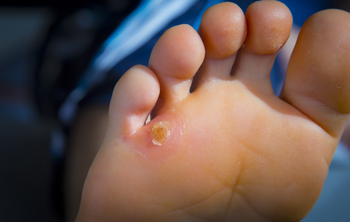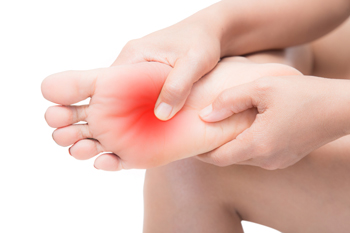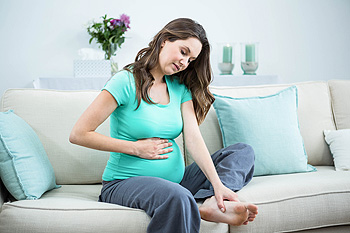Blog
Do Your Child's Feet Hurt?
Causes of Ankle Pain
 Ankle pain can have a variety of causes. While an ankle sprain may have an obvious cause, usually by rolling the ankle, there are plenty of more subtle injuries that can occur. These subtle injuries can include an ankle impingement which is a wedging at the front of the ankle, or an avulsion fracture, meaning a small piece of bone fractures away from the main bone due to the pull of a tendon or ligament that is attached to the bone. Tarsal tunnel syndrome is the pinching of the nerve that runs through the ankle, and even various forms of arthritis are all potential causes of ankle pain that will require treatment from a podiatrist. Once a diagnosis has been made, a podiatrist can then minimize pain and customize a treatment plan that is right for you.
Ankle pain can have a variety of causes. While an ankle sprain may have an obvious cause, usually by rolling the ankle, there are plenty of more subtle injuries that can occur. These subtle injuries can include an ankle impingement which is a wedging at the front of the ankle, or an avulsion fracture, meaning a small piece of bone fractures away from the main bone due to the pull of a tendon or ligament that is attached to the bone. Tarsal tunnel syndrome is the pinching of the nerve that runs through the ankle, and even various forms of arthritis are all potential causes of ankle pain that will require treatment from a podiatrist. Once a diagnosis has been made, a podiatrist can then minimize pain and customize a treatment plan that is right for you.
Ankle pain can have many different causes and the pain may potentially be serious. If you have ankle pain, consult with one of our podiatrists from New York Foot and Ankle. Our doctors will assess your condition and provide you with quality foot and ankle treatment.
Ankle pain is any condition that causes pain in the ankle. Due to the fact that the ankle consists of tendons, muscles, bones, and ligaments, ankle pain can come from a number of different conditions.
Causes
The most common causes of ankle pain include:
- Types of arthritis (rheumatoid, osteoarthritis, and gout)
- Ankle sprains
- Broken ankles
- Achilles tendinitis
- Achilles tendon rupture
- Stress fractures
- Tarsal tunnel syndrome
- Plantar fasciitis
Symptoms
Symptoms of ankle injury vary based upon the condition. Pain may include general pain and discomfort, swelling, aching, redness, bruising, burning or stabbing sensations, and/or loss of sensation.
Diagnosis
Due to the wide variety of potential causes of ankle pain, podiatrists will utilize a number of different methods to properly diagnose ankle pain. This can include asking for personal and family medical histories and of any recent injuries. Further diagnosis may include sensation tests, a physical examination, and potentially x-rays or other imaging tests.
Treatment
Just as the range of causes varies widely, so do treatments. Some more common treatments are rest, ice packs, keeping pressure off the foot, orthotics and braces, medication for inflammation and pain, and surgery.
If you have any questions, please feel free to contact one of our offices located in Franklin Square, Bethpage, Brooklyn, and Massapequa, NY . We offer the newest diagnostic and treatment technologies for all your foot care needs.
What is Morton’s Neuroma?
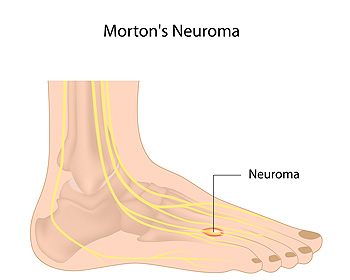 A neuroma is the thickening of a nerve, and Morton’s neuroma particularly involves the thickening of the nerve between the third and fourth toe. This nerve, which is normally 2mm wide, can grow up to 15mm in size and can be easily irritated by the bones surrounding it. Common symptoms of Morton’s neuroma include a sharp stabbing and or shooting pain, a burning or tingling sensation, or numbness in the toes. Treatments of this ailment can include orthotics, adding padding to the foot or shoes worn to decrease pressure and irritation, or injections of local corticosteroids to reduce the inflammation. These conservative methods have a high success rate however, if the neuroma is not treated and continues to grow and cause more severe pain, surgery may be necessary. If you are experiencing pain in your toes or the ball of your foot, it is important to visit a podiatrist for a proper diagnosis and correct treatment.
A neuroma is the thickening of a nerve, and Morton’s neuroma particularly involves the thickening of the nerve between the third and fourth toe. This nerve, which is normally 2mm wide, can grow up to 15mm in size and can be easily irritated by the bones surrounding it. Common symptoms of Morton’s neuroma include a sharp stabbing and or shooting pain, a burning or tingling sensation, or numbness in the toes. Treatments of this ailment can include orthotics, adding padding to the foot or shoes worn to decrease pressure and irritation, or injections of local corticosteroids to reduce the inflammation. These conservative methods have a high success rate however, if the neuroma is not treated and continues to grow and cause more severe pain, surgery may be necessary. If you are experiencing pain in your toes or the ball of your foot, it is important to visit a podiatrist for a proper diagnosis and correct treatment.
Morton’s neuroma is a very uncomfortable condition to live with. If you think you have Morton’s neuroma, contact one of our podiatrists of New York Foot and Ankle. Our doctors will attend to all of your foot care needs and answer any of your related questions.
Morton’s Neuroma
Morton's neuroma is a painful foot condition that commonly affects the areas between the second and third or third and fourth toe, although other areas of the foot are also susceptible. Morton’s neuroma is caused by an inflamed nerve in the foot that is being squeezed and aggravated by surrounding bones.
What Increases the Chances of Having Morton’s Neuroma?
- Ill-fitting high heels or shoes that add pressure to the toe or foot
- Jogging, running or any sport that involves constant impact to the foot
- Flat feet, bunions, and any other foot deformities
Morton’s neuroma is a very treatable condition. Orthotics and shoe inserts can often be used to alleviate the pain on the forefront of the feet. In more severe cases, corticosteroids can also be prescribed. In order to figure out the best treatment for your neuroma, it’s recommended to seek the care of a podiatrist who can diagnose your condition and provide different treatment options.
If you have any questions, please feel free to contact one of our offices located in Franklin Square, Bethpage, Brooklyn, and Massapequa, NY . We offer the newest diagnostic and treatment technologies for all your foot care needs.
Two Types of Corns on the Feet
Patients who have corns on their feet are often aware of the discomfort they may cause. A corn is generally caused by excessive friction that may come from the shoes and socks that are worn. There are two types of corns that can develop on the feet. Hard corns can develop on top of the toes, or on the bottom of the feet. The center of the corn can be removed, and may take several weeks to heal. If the corn forms between the toes, it is identified as a soft corn, and can cause severe pain while walking. It may be prevented by wearing shoes that have adequate room for the toes to move freely in. If you notice you have either type of corn on your feet, it is advised that you speak with a podiatrist who can begin effective treatment as quickly as possible.
If you have any concerns regarding your feet and ankles, contact one of our podiatrists of New York Foot and Ankle. Our doctors will treat your foot and ankle needs.
Corns: What Are They? and How Do You Get Rid of Them?
Corns can be described as areas of the skin that have thickened to the point of becoming painful or irritating. They are often layers and layers of the skin that have become dry and rough, and are normally smaller than calluses.
Ways to Prevent Corns
There are many ways to get rid of painful corns such as wearing:
- Well-fitting socks
- Comfortable shoes that are not tight around your foot
- Shoes that offer support
Treating Corns
Treatment of corns involves removing the dead skin that has built up in the specific area of the foot. Consult with Our doctors to determine the best treatment option for your case of corns.
If you have any questions please feel free to contact one of our offices located in Franklin Square, Bethpage, Brooklyn, and Massapequa, NY . We offer the newest diagnostic and treatment technologies for all your foot and ankle needs.
How Do I Know If I Have an Ingrown Toenail?
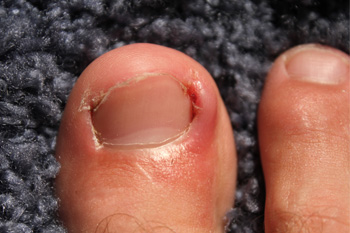 Ingrown toenails occur when the edge of your nail grows into the skin surrounding it instead of growing over the skin as it should. The toenails of the big toe are the most likely to become ingrown. You may notice first milder symptoms of an ingrown toenail. The area surrounding the ingrown nail will often become swollen, tender, and slightly painful to the touch. Without treatment, the ingrown toenail may become infected. Symptoms of an infection can include redness of the surrounding skin, throbbing pain, pus coming out of your toe, and even fever. If you have an ingrown toenail, it is recommended that you visit a podiatrist for treatment. A podiatrist can also give you suggestions on how to prevent ingrown toenails in the future. Some of the preventative measures you can take include cutting your nails straight across and not too short and avoiding uncomfortable shoes that crowd your feet.
Ingrown toenails occur when the edge of your nail grows into the skin surrounding it instead of growing over the skin as it should. The toenails of the big toe are the most likely to become ingrown. You may notice first milder symptoms of an ingrown toenail. The area surrounding the ingrown nail will often become swollen, tender, and slightly painful to the touch. Without treatment, the ingrown toenail may become infected. Symptoms of an infection can include redness of the surrounding skin, throbbing pain, pus coming out of your toe, and even fever. If you have an ingrown toenail, it is recommended that you visit a podiatrist for treatment. A podiatrist can also give you suggestions on how to prevent ingrown toenails in the future. Some of the preventative measures you can take include cutting your nails straight across and not too short and avoiding uncomfortable shoes that crowd your feet.
Ingrown toenails can become painful if they are not treated properly. For more information about ingrown toenails, contact one of our podiatrists of New York Foot and Ankle. Our doctors can provide the care you need to keep you pain-free and on your feet.
Ingrown Toenails
Ingrown toenails occur when a toenail grows sideways into the bed of the nail, causing pain, swelling, and possibly infection.
Causes
- Bacterial infections
- Improper nail cutting such as cutting it too short or not straight across
- Trauma to the toe, such as stubbing, which causes the nail to grow back irregularly
- Ill-fitting shoes that bunch the toes too close together
- Genetic predisposition
Prevention
Because ingrown toenails are not something found outside of shoe-wearing cultures, going barefoot as often as possible will decrease the likeliness of developing ingrown toenails. Wearing proper fitting shoes and using proper cutting techniques will also help decrease your risk of developing ingrown toenails.
Treatment
Ingrown toenails are a very treatable foot condition. In minor cases, soaking the affected area in salt or antibacterial soaps will not only help with the ingrown nail itself, but also help prevent any infections from occurring. In more severe cases, surgery is an option. In either case, speaking to your podiatrist about this condition will help you get a better understanding of specific treatment options that are right for you.
If you have any questions please feel free to contact one of our offices located in Franklin Square, Bethpage, Brooklyn, and Massapequa, NY . We offer the newest diagnostic and treatment technologies for all your foot and ankle needs.
Wounds That Don't Heal Need to Be Checked
Can Ingrown Toenails Be Prevented in Children?
 Research has shown the importance of practicing proper foot care beginning in the childhood years. The feet are considered to be the foundation of the body, and strong, healthy feet are important to have and maintain as the aging process occurs. It is beneficial to measure the child’s foot approximately every three months, which is helpful in determining the correct shoe size. When shoes are purchased, it is important to ensure that there is adequate room for the toes to move freely. When the toenails are trimmed, ingrown toenails may be prevented by cutting toenails straight across. If you would like additional information about teaching proper foot care to children, please confer with a podiatrist.
Research has shown the importance of practicing proper foot care beginning in the childhood years. The feet are considered to be the foundation of the body, and strong, healthy feet are important to have and maintain as the aging process occurs. It is beneficial to measure the child’s foot approximately every three months, which is helpful in determining the correct shoe size. When shoes are purchased, it is important to ensure that there is adequate room for the toes to move freely. When the toenails are trimmed, ingrown toenails may be prevented by cutting toenails straight across. If you would like additional information about teaching proper foot care to children, please confer with a podiatrist.
Making sure that your children maintain good foot health is very important as they grow. If you have any questions, contact one of our podiatrists of New York Foot and Ankle. Our doctors can provide the care you need to keep you pain-free and on your feet.
Keeping Children's Feet Healthy
Having healthy feet during childhood can help prevent medical problems later in life, namely in the back and legs. As children grow, their feet require different types of care. Here are some things to consider...
Although babies do not walk yet, it is still very important to take care of their feet.
Avoid putting tight shoes or socks on his or her feet.
Allow the baby to stretch and kick his or her feet to feel comfortable.
As a toddler, kids are now on the move and begin to develop differently. At this age, toddlers are getting a feel for walking, so don’t be alarmed if your toddler is unsteady or ‘walks funny’.
As your child gets older, it is important to teach them how to take care of their feet.
Show them proper hygiene to prevent infections such as fungus.
Be watchful for any pain or injury.
Have all injuries checked by a doctor as soon as possible.
Comfortable, protective shoes should always be worn, especially at play.
If you have any questions please feel free to contact one of our offices located in Franklin Square, Bethpage, Brooklyn, and Massapequa, NY . We offer the newest diagnostic and treatment technologies for all your foot and ankle needs.
Possible Causes and Types of Foot Pain
The feet are considered to be the foundation of the body, and can endure numerous aches and pains as a result of bearing the weight of the body. A common type of foot pain comes from developing a condition known as plantar fasciitis. This ailment affects the plantar fascia, which is the band of tissue that connects the heel to the toes. The discomfort is often felt in the heel and may feel its worst upon arising in the morning. Additionally, heel pain can be associated with a heel spur. This is described as a small growth that extends from the heel, and can develop due to repetitive stress that can come from frequently participating in running and jumping activities. A stress fracture is a hairline crack in one of the bones in the foot and can cause severe pain and discomfort. This type of foot injury gradually develops. Common symptoms may include a stabbing pain and general discomfort in the part of the foot that is affected. If you have any type of foot pain it is strongly suggested that you consult with a podiatrist as soon as possible. A podiatrist can properly diagnose your condition and offer you the best treatment options.
Foot Pain
Foot pain can be extremely painful and debilitating. If you have a foot pain, consult with one of our podiatrists from New York Foot and Ankle. Our doctors will assess your condition and provide you with quality foot and ankle treatment.
Causes
Foot pain is a very broad condition that could be caused by one or more ailments. The most common include:
- Bunions
- Hammertoes
- Plantar Fasciitis
- Bone Spurs
- Corns
- Tarsal Tunnel Syndrome
- Ingrown Toenails
- Arthritis (such as Gout, Rheumatoid, and Osteoarthritis)
- Flat Feet
- Injury (from stress fractures, broken toe, foot, ankle, Achilles tendon ruptures, and sprains)
- And more
Diagnosis
To figure out the cause of foot pain, podiatrists utilize several different methods. This can range from simple visual inspections and sensation tests to X-rays and MRI scans. Prior medical history, family medical history, and any recent physical traumatic events will all be taken into consideration for a proper diagnosis.
Treatment
Treatment depends upon the cause of the foot pain. Whether it is resting, staying off the foot, or having surgery; podiatrists have a number of treatment options available for foot pain.
If you have any questions, please feel free to contact one of our offices located in Franklin Square, Bethpage, Brooklyn, and Massapequa, NY . We offer the newest diagnostic and treatment technologies for all your foot care needs.
Exposure to Fungus May Cause Athlete's Foot
An infection on the skin of the feet is commonly known as athlete’s foot. It can cause severe redness, and the skin may itch and develop small blisters. The bottom of the feet and between the toes are the areas of the feet that are most often affected by this condition. It is caused by a fungus that is known to be contagious, and lives and thrives in warm and moist environments. These can include public swimming pools, shower room floors, and surrounding areas. Effective prevention methods can consist of wearing appropriate shoes while in these types of places, and it is helpful to avoid sharing towels, shoes, and socks. Mild relief may be found when an antifungal powder is applied to the affected area, and this may help to control existing inflammation. If you are afflicted with athlete’s foot and would like professional advice on how it is treated, it is strongly suggested that you consult with a podiatrist.
Athlete’s Foot
Athlete’s foot is often an uncomfortable condition to experience. Thankfully, podiatrists specialize in treating athlete’s foot and offer the best treatment options. If you have any questions about athlete’s foot, consult with one of our podiatrists from New York Foot and Ankle. Our doctors will assess your condition and provide you with quality treatment.
What Is Athlete’s Foot?
Tinea pedis, more commonly known as athlete’s foot, is a non-serious and common fungal infection of the foot. Athlete’s foot is contagious and can be contracted by touching someone who has it or infected surfaces. The most common places contaminated by it are public showers, locker rooms, and swimming pools. Once contracted, it grows on feet that are left inside moist, dark, and warm shoes and socks.
Prevention
The most effective ways to prevent athlete’s foot include:
- Thoroughly washing and drying feet
- Avoid going barefoot in locker rooms and public showers
- Using shower shoes in public showers
- Wearing socks that allow the feet to breathe
- Changing socks and shoes frequently if you sweat a lot
Symptoms
Athlete’s foot initially occurs as a rash between the toes. However, if left undiagnosed, it can spread to the sides and bottom of the feet, toenails, and if touched by hand, the hands themselves. Symptoms include:
- Redness
- Burning
- Itching
- Scaly and peeling skin
Diagnosis and Treatment
Diagnosis is quick and easy. Skin samples will be taken and either viewed under a microscope or sent to a lab for testing. Sometimes, a podiatrist can diagnose it based on simply looking at it. Once confirmed, treatment options include oral and topical antifungal medications.
If you have any questions, please feel free to contact one of our offices located in Franklin Square, Bethpage, Brooklyn, and Massapequa, NY . We offer the newest diagnostic and treatment technologies for all your foot care needs.
Who Is Prone to Developing Sever’s Disease?
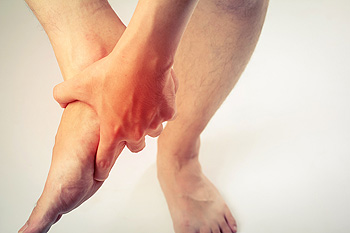 Children who frequently participate in running and jumping activities may complain about heel pain. It may be indicative of a condition that is referred to as Sever’s disease, which affects the growth plate in the heel. It may become irritated as a result of repetitive motions during specific sporting activities. Parents may notice that their child begins to walk with a limp, and the back of the heel may be swollen. It is beneficial to rest and elevate the affected foot, and it may help to relieve a portion of the pain when the calf muscles are stretched. If your active child complains of heel pain, it is advised that you schedule a consultation with a podiatrist who can properly diagnose and treat Sever’s disease.
Children who frequently participate in running and jumping activities may complain about heel pain. It may be indicative of a condition that is referred to as Sever’s disease, which affects the growth plate in the heel. It may become irritated as a result of repetitive motions during specific sporting activities. Parents may notice that their child begins to walk with a limp, and the back of the heel may be swollen. It is beneficial to rest and elevate the affected foot, and it may help to relieve a portion of the pain when the calf muscles are stretched. If your active child complains of heel pain, it is advised that you schedule a consultation with a podiatrist who can properly diagnose and treat Sever’s disease.
Sever's disease often occurs in children and teens. If your child is experiencing foot or ankle pain, see one of our podiatrists from New York Foot and Ankle. Our doctors can treat your child’s foot and ankle needs.
Sever’s Disease
Sever’s disease is also known as calcaneal apophysitis, which is a medical condition that causes heel pain I none or both feet. The disease is known to affect children between the ages of 8 and 14.
Sever’s disease occurs when part of the child’s heel known as the growth plate (calcaneal epiphysis) is attached to the Achilles tendon. This area can suffer injury when the muscles and tendons of the growing foot do not keep pace with bone growth. Therefore, the constant pain which one experiences at the back of the heel will make the child unable to put any weight on the heel. The child is then forced to walk on their toes.
Symptoms
Acute pain – Pain associated with Sever’s disease is usually felt in the heel when the child engages in physical activity such as walking, jumping and or running.
Highly active – Children who are very active are among the most susceptible in experiencing Sever’s disease, because of the stress and tension placed on their feet.
If you have any questions, please feel free to contact one of our offices located in Franklin Square, Bethpage, Brooklyn, and Massapequa, NY . We offer the newest diagnostic and treatment technologies for all your foot and ankle injuries.
More...
It's Time for Beautiful Feet
Why Shoes Need to Fit Properly
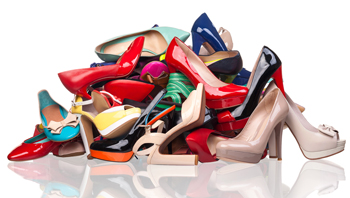 When shoes do not fit properly friction may occur, and this can lead to pain or discomfort. While simple discomfort can be annoying, improperly fitting shoes may also cause many other foot conditions to arise. These can include corns, which are small hardened bumps of skin. Bunions, that typically cause swelling on the joint of the big toe, and depending on the severity, may require surgery for permanent removal. And lastly blisters, which is when the skin forms a bubble that is filled with fluid and this is a direct result from excess friction. One solution to managing these various types of conditions includes proper shoe inserts, or custom orthotics. If you are afflicted with any ailment of the foot due to improperly fitting shoes, it is important to consult with a podiatrist. Podiatrists will be able to help and treat any issues that have developed, as well as provide preventative steps to keep them from getting worse.
When shoes do not fit properly friction may occur, and this can lead to pain or discomfort. While simple discomfort can be annoying, improperly fitting shoes may also cause many other foot conditions to arise. These can include corns, which are small hardened bumps of skin. Bunions, that typically cause swelling on the joint of the big toe, and depending on the severity, may require surgery for permanent removal. And lastly blisters, which is when the skin forms a bubble that is filled with fluid and this is a direct result from excess friction. One solution to managing these various types of conditions includes proper shoe inserts, or custom orthotics. If you are afflicted with any ailment of the foot due to improperly fitting shoes, it is important to consult with a podiatrist. Podiatrists will be able to help and treat any issues that have developed, as well as provide preventative steps to keep them from getting worse.
It is important to find shoes that fit you properly in order to avoid a variety of different foot problems. For more information about treatment, contact one of our podiatrists from New York Foot and Ankle. Our doctors will treat your foot and ankle needs.
Proper Shoe Fitting
Shoes have many different functions. They cushion our body weight, protect our feet, and allow us to safely play sports. You should always make sure that the shoes you wear fit you properly in order to avoid injuries and deformities such as: bunions, corns, calluses, hammertoes, plantar fasciitis, stress fractures, and more. It is important to note that although a certain pair of shoes might be a great fit for someone else, that doesn’t mean they will be a great fit for you. This is why you should always try on shoes before buying them to make sure they are worth the investment. Typically, shoes need to be replaced ever six months to one year of regular use.
Tips for Proper Shoe Fitting
- Select a shoe that is shaped like your foot
- Don’t buy shoes that fit too tight, expecting them to stretch to fit
- Make sure there is enough space (3/8” to ½”) for your longest toe at the end of each shoe when you are standing up
- Walk in the shoes to make sure they fit and feel right
- Don’t select shoes by the size marked inside the shoe, but by how the shoe fits your foot
The shoes you buy should always feel as good as they look. Shoes that fit properly will last longer, feel better, and improve your way of life each day.
If you have any questions, please feel free to contact one of our offices located in Franklin Square, Bethpage, Brooklyn, and Massapequa, NY . We offer the newest diagnostic and treatment technologies for all your foot care needs.
Hammertoe and Shoes
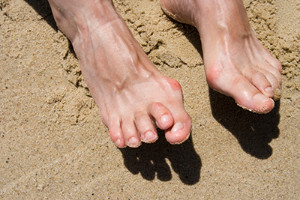 The medical condition that is known as hammertoe can occur as a result of wearing shoes that do not have adequate room for the toes to move freely in. It affects the second and third toes and causes them to bend at the middle joints, which often makes them resemble hammers. Patients may develop calluses on top of the affected toes, and this is the result of friction as the toes rub against the shoes. Effective treatment methods for mild cases can consist of wearing shoes that fit properly, and it may help to perform specific stretches. In severe cases, surgery may be necessary to permanently straighten the toes. If you are afflicted with hammertoe, it is advised that you consult with a podiatrist as quickly as possible who can help you with proper treatment management.
The medical condition that is known as hammertoe can occur as a result of wearing shoes that do not have adequate room for the toes to move freely in. It affects the second and third toes and causes them to bend at the middle joints, which often makes them resemble hammers. Patients may develop calluses on top of the affected toes, and this is the result of friction as the toes rub against the shoes. Effective treatment methods for mild cases can consist of wearing shoes that fit properly, and it may help to perform specific stretches. In severe cases, surgery may be necessary to permanently straighten the toes. If you are afflicted with hammertoe, it is advised that you consult with a podiatrist as quickly as possible who can help you with proper treatment management.
Hammertoes can be a painful condition to live with. For more information, contact one of our podiatrists of New York Foot and Ankle. Our doctors will answer any of your foot- and ankle-related questions.
Hammertoe
Hammertoe is a foot deformity that occurs due to an imbalance in the muscles, tendons, or ligaments that normally hold the toe straight. It can be caused by the type of shoes you wear, your foot structure, trauma, and certain disease processes.
Symptoms
- Painful and/or difficult toe movement
- Swelling
- Joint stiffness
- Calluses/Corns
- Physical deformity
Risk Factors
- Age – The risk of hammertoe increases with age
- Sex – Women are more likely to have hammertoe compared to men
- Toe Length – You are more likely to develop hammertoe if your second toe is longer than your big toe
- Certain Diseases – Arthritis and diabetes may make you more likely to develop hammertoe
Treatment
If you have hammertoe, you should change into a more comfortable shoe that provides enough room for your toes. Exercises such as picking up marbles may strengthen and stretch your toe muscles. Nevertheless, it is important to seek assistance from a podiatrist in order to determine the severity of your hammertoe and see which treatment option will work best for you.
If you have any questions, please feel free to contact one of our offices located in Franklin Square, Bethpage, Brooklyn, and Massapequa, NY . We offer the newest diagnostic and treatment technologies for all your foot care needs.
Edema Is Common During Pregnancy
Many women may experience difficulty wearing shoes as their pregnancy progresses. This can be a result of swollen feet, which can cause discomfort. Swelling, or edema, is considered to be a normal part of pregnancy, and there are methods that can be implemented which can help to manage the swelling. These can consist of elevating the feet as often as possible during the day, and controlling the amount of salt that is ingested. It may also help to drink plenty of fresh water, in addition to refraining from sitting for long periods at a time. It is important for the feet to maintain proper hygiene during pregnancy, and it is suggested that you consult with a podiatrist who can guide you toward proper foot care.
Pregnant women with swollen feet can be treated with a variety of different methods that are readily available. For more information about other cures for swollen feet during pregnancy, consult with one of our podiatrists from New York Foot and Ankle. Our doctors will attend to all of your foot and ankle needs.
What Foot Problems Can Arise During Pregnancy?
One problem that can occur is overpronation, which occurs when the arch of the foot flattens and tends to roll inward. This can cause pain and discomfort in your heels while you’re walking or even just standing up, trying to support your baby.
Another problem is edema, or swelling in the extremities. This often affects the feet during pregnancy but tends to occur in the later stages.
How Can I Keep My Feet Healthy During Pregnancy?
- Wearing orthotics can provide extra support for the feet and help distribute weight evenly
- Minimize the amount of time spent walking barefoot
- Wear shoes with good arch support
- Wear shoes that allow for good circulation to the feet
- Elevate feet if you experience swelling
- Massage your feet
- Get regular, light exercise, such as walking, to promote blood circulation to the feet
If you have any questions please feel free to contact one of our offices located in Franklin Square, Bethpage, Brooklyn, and Massapequa, NY . We offer the newest diagnostic and treatment technologies for all your foot and ankle needs.

